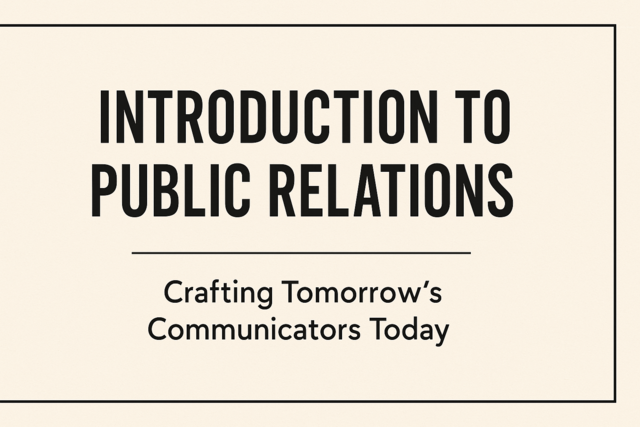Online Class: Workplace Safety and Health Awareness

no certificate
with CEU Certificate*
-
15Lessons
-
22Exams &
Assignments -
6Hours
average time -
0.6CEUs
Course Description
Imagine stepping into a world where your utmost focus is your safety and well-being; a world where your employer has invested in a transformative experience to ensure you're not just protected, but thriving. Now imagine unlocking that world for yourself or your team, where safety doesn't just mean compliance, but represents a commitment to excellence in every aspect of work life. Welcome to the Workplace Safety and Health Awareness course—a journey not just into the mechanics of safety rules and regulations but into an enriched work environment where health is synonymous with opportunity.
This course invites you to transform your workspace into a sanctuary of security and productivity, interweaving safety seamlessly into the very fabric of professional life. It's not just another online course; this is an empowering venture designed to revolutionize the way you think about workplace safety and health, turning it into an essential strategy for success. Imagine a workplace where you are equipped with the knowledge to safeguard not only yourself but your colleagues, elevating the standards of well-being to new heights.
At the heart of the Workplace Safety and Health Awareness course is a promise to enhance productivity by minimizing hazards while fostering an environment where mental well-being is prized just as highly as physical safety. You will delve deep into the dynamics of workplace health, exploring not only the foundational safety practices but also the vital issue of mental health—ensuring you are equipped to address both with equal diligence.
Navigating the complex terrain of workplace safety can be daunting; biological threats and other unexpected hazards lurk around every corner. This course empowers you with the knowledge and tools necessary to not only recognize and manage these risks but also to proactively implement strategies that shield you and those around you from potential harm.
Delve into the art of ergonomic excellence, where you'll learn to redesign and optimize your workspace, aligning it effortlessly with human capability. Harness the power of ergonomics to not only enhance comfort and safety but to drive performance and satisfaction, creating a workspace that inspires and supports every task.
Fire safety, a critical component in any workplace, is addressed with comprehensive exploration and innovative solutions. Master the nuances of fire dynamics and suppression strategies, learning not just to fight fires but to prevent them, gaining the expertise needed to safeguard valuable operations from unpredictable threats.
Personal protective equipment (PPE) becomes more than just gear; it becomes a symbol of commitment to comprehensive safety, highlighted by advanced safety measures and strategies tailored to your industry. Understand how to effectively communicate chemical hazards, ensuring that crucial safety information is consistently and accurately conveyed, minimizing errors and potential injuries.
This course opens doors to a broader understanding of safety, from lifting techniques that protect your physical health to complying with industry-specific regulations that elevate your entire organizational culture. Equip yourself to reduce workplace accidents through mindfulness and proactive safety communication, embedding a culture of safety in every interaction and procedure.
Stress at work—an omnipresent challenge—is transformed from elephant in the room to an opportunity for growth and resilience. Managers and leaders are taught to harness the potential of empathetic leadership and stress management strategies, in turn enhancing both productivity and employee satisfaction.
In an ever-evolving technological landscape, continuous learning is critical. We integrate cutting-edge technologies like augmented reality and IoT monitoring to augment risk assessments and promote groundbreaking safety innovations. Health and safety committees merge traditional inspections with these futuristic approaches, ensuring a holistic and up-to-date safety culture.
As you embark on this course, know that each step not only equips you with practical skills to prevent injuries but also instills a powerful, proactive mindset towards safety, bridging theory and practice in innovative ways. Invest in a safer, more productive future for yourself and your colleagues by mastering the art of workplace safety and health awareness now. Transform your work environment and, by extension, elevate your career and organizational success to unprecedented levels. Your journey to safe excellence begins here.
- Completely Online
- Self-Paced
- 6 Months to Complete
- 24/7 Availability
- Start Anytime
- PC & Mac Compatible
- Android & iOS Friendly
- Accredited CEUs
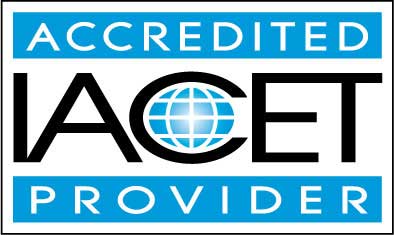
Course Lessons
Lesson 1. Workplace Health: Safeguarding Employees for Enhanced Productivity
Workplace safety and health programs are crucial for employee well-being and can significantly boost company productivity and performance by minimizing hazards and ensuring a supportive work environment. Such initiatives involve enforcing safety practices, addressing mental health concerns, and providing training, which collectively reduce risks and enhance job satisfaction.Lesson 2. Navigating the Complex Terrain of Workplace Safety
Biological hazards pose serious risks, particularly for healthcare workers exposed to infectious agents, necessitating protective measures like vaccines and stringent hygiene practices. A sharp focus on identifying and managing these hazards is essential in preventing the spread of diseases and maintaining a safe work environment.Lesson 3. Ergonomic Excellence: Optimizing Workspaces for Well-being and Productivity
Incorporating ergonomic principles into workspace design aligns work demands with human capabilities, effectively minimizing injury risks. This proactive approach translates to increased worker satisfaction, lower healthcare costs, and heightened business performance.Lesson 4. Mastering Fire Safety: A Comprehensive Exploration of Fire Dynamics and Suppression Strategies
Each class of fire, from combustible materials to volatile liquids, necessitates tailored extinguishing techniques to prevent escalation and ensure safety. Proper training and proactive controls can minimize fire risks, exemplified by scenarios in industries like artisanal workshops and craft distilleries.Lesson 5. PPE and Worker Safety
PPE's role in modern workplaces is pivotal in mitigating risks associated with chemical spills, noise, and airborne particles, ensuring worker safety through specialized gear like helmets and respirators. While essential, it complements broader safety measures such as engineering and administrative controls, highlighting a commitment to comprehensive safety strategies.Lesson 6. Understanding Chemical Hazard Communication
Clear chemical labeling, as facilitated by the Globally Harmonized System, ensures consistent hazard information is conveyed globally through structured labels and safety data sheets, enhancing safety practices. Safety Data Sheets complement labeling by offering detailed chemical information, promoting safe handling and emergency response in workplace environments.Lesson 7. A Comprehensive Guide to Reducing Workplace Accidents
Recognizing human factors like distractions and stress is essential in preventing accidents, promoting mindfulness at work. Ongoing safety education and open communication channels enable timely hazard reporting and interventions, supporting a proactive safety culture.Lesson 8. Safe Lifting Techniques
This lesson emphasizes the importance of ergonomics in workplace safety, particularly in lifting tasks, to prevent musculoskeletal injuries and enhance productivity. By leveraging proper body mechanics and integrating tools like exoskeletons, workers can achieve greater efficiency and reduce injury risks.Lesson 9. Understanding Industry-Specific Safety Requirements
A firm understanding of safety laws from bodies like OSHA equips professionals to implement robust safety practices tailored to diverse industries. This knowledge enables the design of precise strategies that reduce risks and enhance employee morale through effective hazard assessment and prevention.Lesson 10. Stress at Work: Addressing the Elephant in the Room
Managers and leaders play a vital role in mitigating workplace stress through empathetic leadership and stress management education. By fostering open communication about mental health and implementing strategies like mindfulness, workplaces can enhance productivity and employee satisfaction.Lesson 11. Minimizing Workplace Risks Through Electrical Safety Training
Technological advancements necessitate continuous learning among workers, necessitating safety protocols that adapt to changing equipment and potential risks encountered. Ensuring employee involvement in safety planning fosters ownership and adherence to safety measures, elevating awareness and responsibility.Lesson 12. Cultivating a Safety Culture in Construction: Best Practices and Innovations
Innovative technologies like drones and augmented reality aim to enhance hazard identification and risk assessment on construction sites, ensuring comprehensive safety measures. Empowering future safety leaders with skills to manage these risks integrates safety culture deeply into construction practices, elevating industry standards for worker protection.Lesson 13. Trust, Tech, and Training: Creating a Safer Food Industry
Technological advancements like UV-C sterilization and IoT monitoring bolster sanitation and storage safety in the food industry, effectively reducing reliance on chemical cleaning and mitigating spoilage risks. Alongside these innovations, cultivating a strong safety culture through education and open communication ensures the continuous enhancement of safety practices.Lesson 14. The Pivotal Role of Health and Safety Committees in Workplace Safety
Risk assessment and hazard identification are cornerstones of Health and Safety Committee operations, using advanced techniques to address potential workplace dangers. Committees merge traditional inspection methodologies with cutting-edge technologies, like AI and drones, ensuring comprehensive safety strategies that meet evolving organizational needs.Lesson 15. Understanding Compliance: The Path to a Hazard-Free Workplace
Comprehending safety regulations is essential for securing a safe work environment, as these rules help prevent workplace injuries and ensure compliance with safety standards. By actively engaging with evolving regulations and fostering a culture of safety, companies can enhance productivity and attract top talent.
Learning Outcomes
- Define occupational safety and health (OSH) and its impact on worker well-being and organizational productivity.
- Identify strategies for implementing effective OSH programs, including risk assessment and employee engagement in safety management practices.
- Demonstrate effective hazard identification techniques, such as using checklists and conducting inspections, to proactively manage and mitigate workplace risks.
- Recognize and categorize various workplace hazards, including physical, chemical, biological, and ergonomic, within different work environments.
- Define ergonomic principles and evaluate their impact on reducing workplace-related musculoskeletal disorders by designing a risk-reducing workspace.
- Identify and implement ergonomic tools and strategies that align with current technological advancements to enhance employee well-being and productivity in various work environments.
- Describe effective preventive strategies and safety protocols that mitigate fire risks in workplace environments, including regular drills, role assignments, and technological integration.
- Demonstrate an understanding of fire classifications by identifying specific extinguishing methods for Class A, B, C, D, and K fires.
- Demonstrate the proper use and maintenance of personal protective equipment to ensure maximum safety and compliance with regulatory standards.
- Recognize the different types of personal protective equipment and their specific roles in mitigating workplace hazards.
- Demonstrate the proper use of Safety Data Sheets (SDS) to identify appropriate personal protective equipment (PPE) and emergency procedures for chemical hazards.
- Define the essential elements of GHS labels, including signal words, hazard statements, and pictograms, to ensure safe chemical handling.
- Define specific strategies for reducing slip, trip, and fall risks in various workplace environments by applying preventative measures and safety training techniques.
- Demonstrate mastery of lesson content at levels of 70% or higher.
Additional Course Information

- Document Your Lifelong Learning Achievements
- Earn an Official Certificate Documenting Course Hours and CEUs
- Verify Your Certificate with a Unique Serial Number Online
- View and Share Your Certificate Online or Download/Print as PDF
- Display Your Certificate on Your Resume and Promote Your Achievements Using Social Media
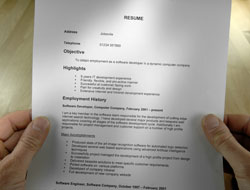
Choose Your Subscription Plan
No Certificate / No CEUs
This course only
| Includes certificate | X |
| Includes CEUs | X |
| Self-paced |

|
| Instructor support |

|
| Time to complete | 6 months |
| No. of courses | 1 course |
Certificate & CEUs
This course only
| Includes certificate |

|
| Includes CEUs |

|
| Self-paced |

|
| Instructor support |

|
| Time to complete | 6 months |
| No. of courses | 1 course |
Certificates & CEUs
Includes all 600+ courses
| Includes certificate |

|
| Includes CEUs |

|
| Self-paced |

|
| Instructor support |

|
| Time to complete | 12 Months |
| No. of courses | 600+ |
Certificates & CEUs
Includes all 600+ courses
| Includes certificate |

|
| Includes CEUs |

|
| Self-paced |

|
| Instructor support |

|
| Time to complete | 24 Months |
| No. of courses | 600+ |
Related Courses
-
 4 hours
0.4 CEUs
Understanding Auras and Energy Fields
+ More Info
4 hours
0.4 CEUs
Understanding Auras and Energy Fields
+ More Info
-
 4 hours
0.4 CEUs
Career Development and Planning
+ More Info
4 hours
0.4 CEUs
Career Development and Planning
+ More Info
-
 6 hours
0.6 CEUs
Mindfulness and Relaxation Techniques for Special Needs Students
+ More Info
6 hours
0.6 CEUs
Mindfulness and Relaxation Techniques for Special Needs Students
+ More Info
-
 4 hours
0.4 CEUs
Enhancing Student Engagement and Motivation
+ More Info
4 hours
0.4 CEUs
Enhancing Student Engagement and Motivation
+ More Info
-
 7 hours
0.7 CEUs
Emotional Intelligence: Enhancing Workplace Relationships
+ More Info
7 hours
0.7 CEUs
Emotional Intelligence: Enhancing Workplace Relationships
+ More Info
-
 4 hours
0.4 CEUs
Assertiveness Training for Professionals
+ More Info
4 hours
0.4 CEUs
Assertiveness Training for Professionals
+ More Info
-
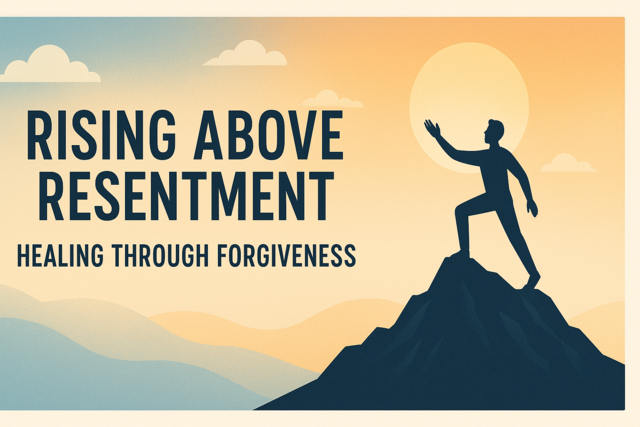 4 hours
0.4 CEUs
Rising Above Resentment: Healing Through Forgiveness
+ More Info
4 hours
0.4 CEUs
Rising Above Resentment: Healing Through Forgiveness
+ More Info
-
 3 hours
0.3 CEUs
Social Media Content Creation
+ More Info
3 hours
0.3 CEUs
Social Media Content Creation
+ More Info
-
 6 hours
0.6 CEUs
Ethical Decision-Making in Business
+ More Info
6 hours
0.6 CEUs
Ethical Decision-Making in Business
+ More Info
-
 4 hours
0.4 CEUs
Implementing Competency-Based Education Systems
+ More Info
4 hours
0.4 CEUs
Implementing Competency-Based Education Systems
+ More Info
-
 7 hours
0.7 CEUs
The Capsule Wardrobe: Streamlining Luxury with Style
+ More Info
7 hours
0.7 CEUs
The Capsule Wardrobe: Streamlining Luxury with Style
+ More Info
-
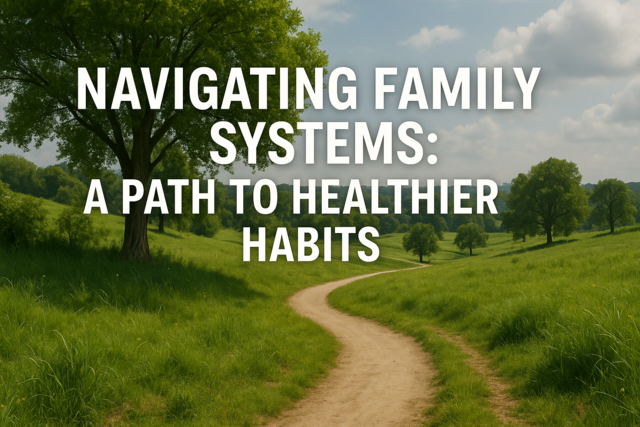 4 hours
0.4 CEUs
Navigating Family Systems: A Path to Healthier Habits
+ More Info
4 hours
0.4 CEUs
Navigating Family Systems: A Path to Healthier Habits
+ More Info
-
 6 hours
0.6 CEUs
Redefining Romance: Finding Love Beyond the Fairytale
+ More Info
6 hours
0.6 CEUs
Redefining Romance: Finding Love Beyond the Fairytale
+ More Info
-
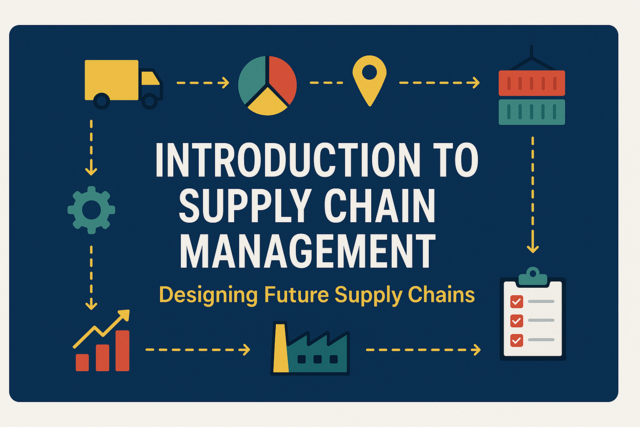 4 hours
0.4 CEUs
Introduction to Supply Chain Management
+ More Info
4 hours
0.4 CEUs
Introduction to Supply Chain Management
+ More Info
-
 3 hours
0.3 CEUs
Advancements in Neurodivergent Education Methods
+ More Info
3 hours
0.3 CEUs
Advancements in Neurodivergent Education Methods
+ More Info
-
 5 hours
0.5 CEUs
Time Travel Mysteries and Paradoxes
+ More Info
5 hours
0.5 CEUs
Time Travel Mysteries and Paradoxes
+ More Info
-
 3 hours
0.3 CEUs
The Role of Paraprofessionals in Special Education
+ More Info
3 hours
0.3 CEUs
The Role of Paraprofessionals in Special Education
+ More Info
-
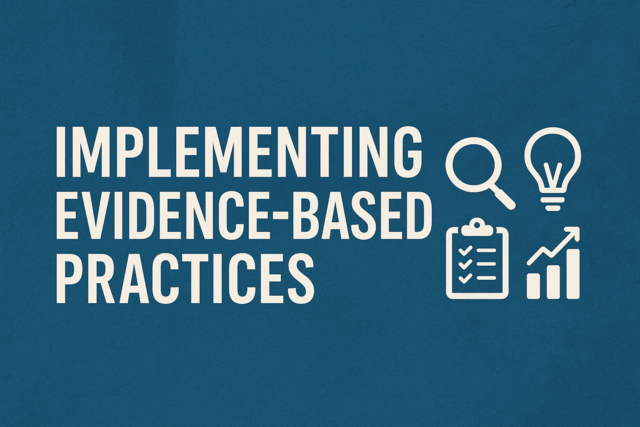 5 hours
0.5 CEUs
Implementing Evidence-Based Practices
+ More Info
5 hours
0.5 CEUs
Implementing Evidence-Based Practices
+ More Info
-
 3 hours
0.3 CEUs
Growing Up Narcissistic: Children in Self-Centered Families
+ More Info
3 hours
0.3 CEUs
Growing Up Narcissistic: Children in Self-Centered Families
+ More Info
-
 5 hours
0.5 CEUs
Family Dynamics and Trauma: Unraveling the Impact on Relationships
+ More Info
5 hours
0.5 CEUs
Family Dynamics and Trauma: Unraveling the Impact on Relationships
+ More Info
-
 4 hours
0.4 CEUs
Sales Skills and Strategies
+ More Info
4 hours
0.4 CEUs
Sales Skills and Strategies
+ More Info
-
 7 hours
0.7 CEUs
Cultural Perspectives on Trauma: Understanding Global Variations
+ More Info
7 hours
0.7 CEUs
Cultural Perspectives on Trauma: Understanding Global Variations
+ More Info
-
 3 hours
0.3 CEUs
Bermuda Triangle Mysteries
+ More Info
3 hours
0.3 CEUs
Bermuda Triangle Mysteries
+ More Info
-
 6 hours
0.6 CEUs
Building Effective Virtual Teams
+ More Info
6 hours
0.6 CEUs
Building Effective Virtual Teams
+ More Info
-
 4 hours
0.4 CEUs
Leadership Skills for Emerging Leaders
+ More Info
4 hours
0.4 CEUs
Leadership Skills for Emerging Leaders
+ More Info
-
 7 hours
0.7 CEUs
Developing and Maintaining Healthy Habits
+ More Info
7 hours
0.7 CEUs
Developing and Maintaining Healthy Habits
+ More Info
-
 5 hours
0.5 CEUs
Family Futures: Creating Lasting Legacies
+ More Info
5 hours
0.5 CEUs
Family Futures: Creating Lasting Legacies
+ More Info
-
 4 hours
0.4 CEUs
Home Organization and Decluttering Techniques
+ More Info
4 hours
0.4 CEUs
Home Organization and Decluttering Techniques
+ More Info
-
 3 hours
0.3 CEUs
Understanding Autism Spectrum Disorders in the Classroom
+ More Info
3 hours
0.3 CEUs
Understanding Autism Spectrum Disorders in the Classroom
+ More Info
-
 5 hours
0.5 CEUs
Mindfulness Techniques for Educators
+ More Info
5 hours
0.5 CEUs
Mindfulness Techniques for Educators
+ More Info
-
 3 hours
0.3 CEUs
Dapper & Distinguished: Men's Fashion Essentials
+ More Info
3 hours
0.3 CEUs
Dapper & Distinguished: Men's Fashion Essentials
+ More Info
-
 5 hours
0.5 CEUs
Intuitive Arts: Beyond the Five Senses
+ More Info
5 hours
0.5 CEUs
Intuitive Arts: Beyond the Five Senses
+ More Info
-
 7 hours
0.7 CEUs
Exploring Chakra Alignments
+ More Info
7 hours
0.7 CEUs
Exploring Chakra Alignments
+ More Info
-
 7 hours
0.7 CEUs
Emotional Detox: Clearing Pathways to Better Relationships
+ More Info
7 hours
0.7 CEUs
Emotional Detox: Clearing Pathways to Better Relationships
+ More Info
-
 5 hours
0.5 CEUs
Recognizing and Supporting Gifted Students with Disabilities
+ More Info
5 hours
0.5 CEUs
Recognizing and Supporting Gifted Students with Disabilities
+ More Info
-
 7 hours
0.7 CEUs
Entrepreneurial Mindset Development
+ More Info
7 hours
0.7 CEUs
Entrepreneurial Mindset Development
+ More Info
-
 7 hours
0.7 CEUs
Cognitive Strategies for Students with Intellectual Disabilities
+ More Info
7 hours
0.7 CEUs
Cognitive Strategies for Students with Intellectual Disabilities
+ More Info
-
 4 hours
0.4 CEUs
Strengthening Sibling Bonds: Strategies for Lifelong Friendships
+ More Info
4 hours
0.4 CEUs
Strengthening Sibling Bonds: Strategies for Lifelong Friendships
+ More Info




